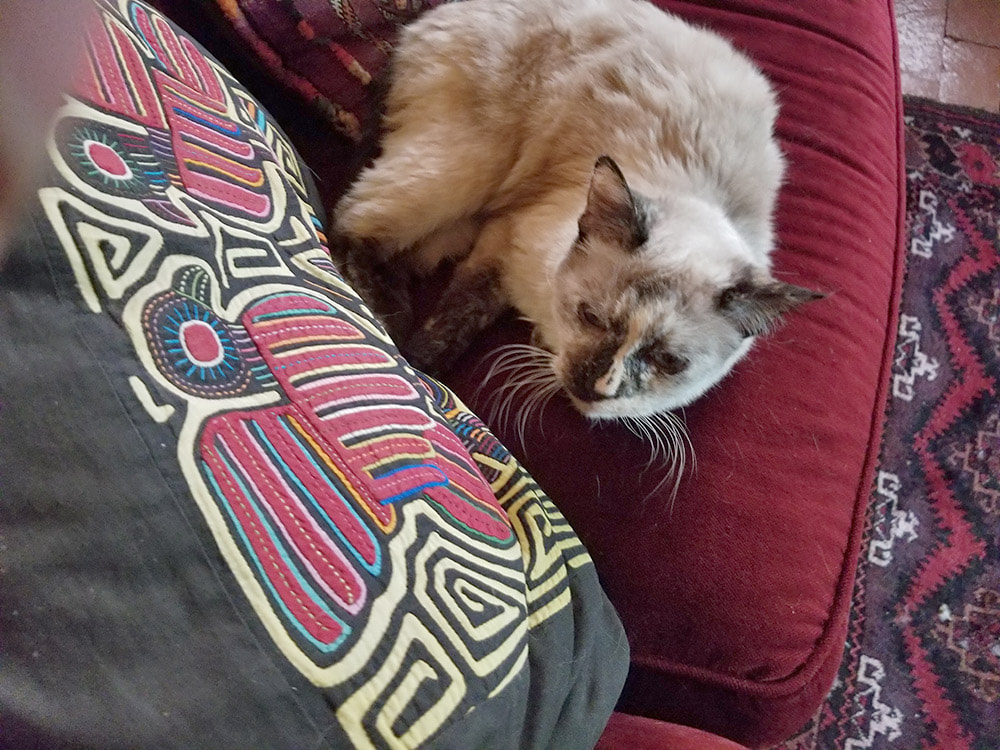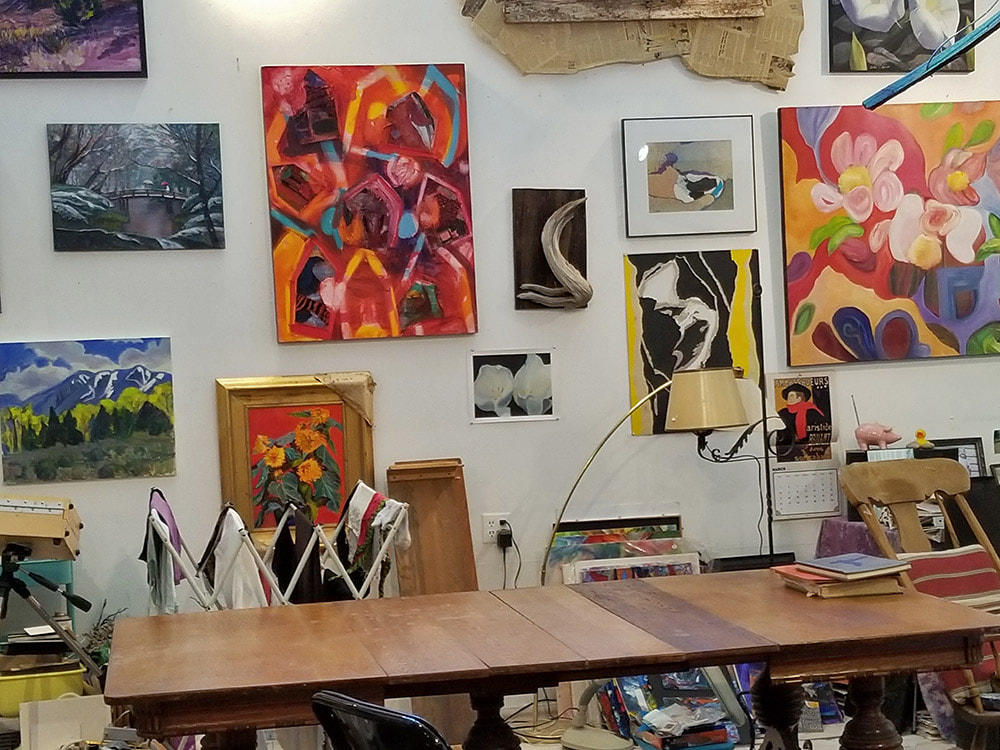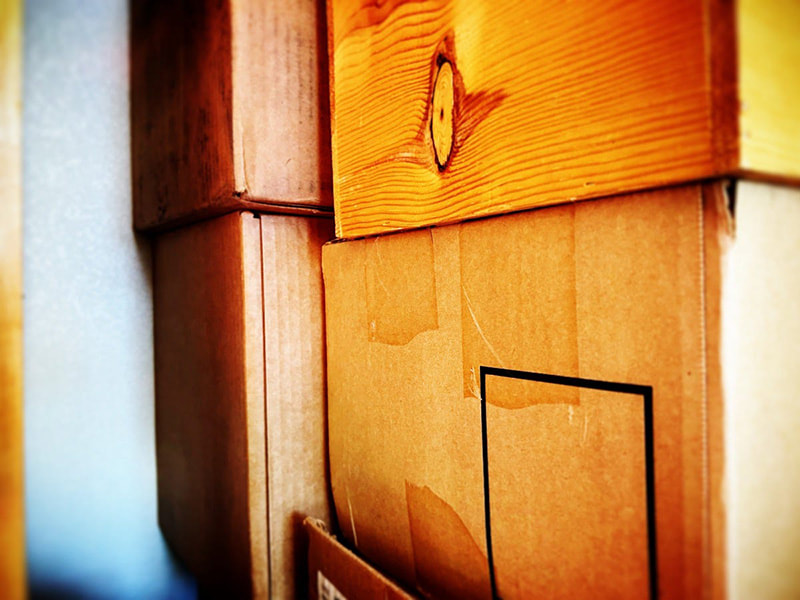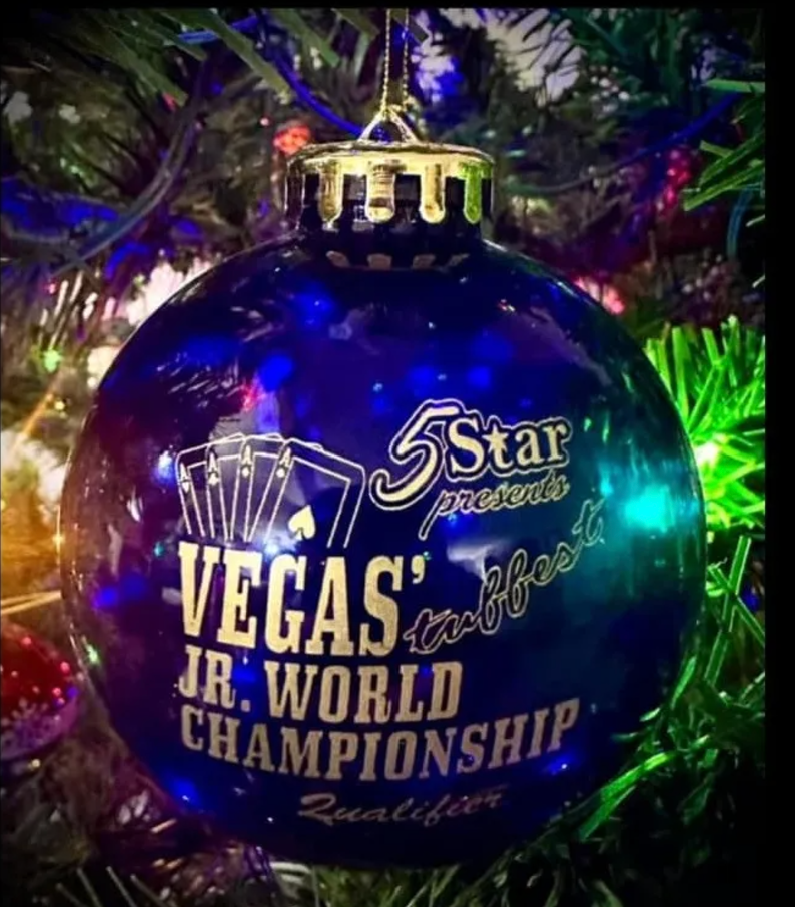|
Community ditches need tens of millions in infrastructure funding, representatives say By: Austin Fisher Source NM After unprecedented disasters, local governments in charge of centuries-old community ditches in New Mexico are asking state lawmakers for tens of millions of dollars more than usual to maintain and rebuild acequias.
The New Mexico Acequia Commission and the New Mexico Acequia Association outlined their joint legislative priorities for the upcoming session last week. There are more than 700 acequias across New Mexico, and these irrigation ditches support communities and families rooted in the practice. Some of the ditches are decades, if not hundreds of years old, and the practices are ancient – as Pueblo peoples used irrigation methods before Spanish colonization. Acequias are often loosely and locally governed, often by volunteers. But a rapidly changing climate making water more scarce and disasters like fires and flood increasingly devastating is putting the traditional practices at risk. Lawmakers in 2003 empowered acequias to approve or deny water transfers without having to go through state officials first, and in 2019 set aside $2.5 million per year to build and maintain irrigation infrastructure. However, that is not enough, acequia advocates say. According to a rough estimate, in the coming decades, acequias will need about $68 million to maintain or improve their irrigation infrastructure, said Paula Garcia, the executive director for the grassroots Acequia Association. “We don’t have complete data on all the infrastructure needs across the state but with that snapshot, I’m confident the need is in the tens of millions every year,” she said. There is no one state agency devoted to acequias, instead, there’s responsibility held across multiple state departments – including the New Mexico Office of the State Engineer or the New Department of Agriculture. Acequias will likely face challenges in getting the funding they need from the Legislature’s budget hawk, Sen. George Muñoz, who chairs the powerful Senate Finance Committee. In September, as state agencies were preparing their budget requests for next year, he called for “a disciplined approach” to spending public money. Cost sharing for infrastructure, disaster assistance The acequias are urging lawmakers to give $10 million to the Interstate Stream Commission to help pay for infrastructure repairs, which require local governments to pay a 25% cost-share, Garcia said. Acequias need the state to step in because they do not have the power to tax. Acequias’ inability to pay for debris removal has become more urgent since 2022, and resulted in “astonishing” delays in rebuilding acequias destroyed by wildfires, Garcia said. She called for debris removal after flooding to be more institutionalized and not just a reaction to emergencies. For example, Garcia’s own acequia in Mora County is in its third year without water and won’t be rebuilt until 2026. “It seems like every time we have a disaster, we’re reinventing the wheel,” Garcia said. “It’s not good for our state.”
0 Comments
FOR IMMEDIATE RELEASE–December 2, 2024–(Santa Fe, NM)– For 50 years, Agapita “Pita” Judy Lopez has been a touchstone on the property Georgia O’Keeffe called home in Abiquiú, NM. On December 31st her retirement from the Georgia O’Keeffe Museum will be official, ending a career that started in 1974. The former personal companion and secretary to the world renowned artist has served many roles dedicated to the legacy of Georgia O’Keeffe including Director of the Georgia O’Keeffe Foundation and, most recently, Projects Director for Abiquiú Historic Properties.
To recognize Pita’s enormous impact on the organization and to honor her contributions, Pita was named an Honorary Member of the Georgia O’Keeffe Museum Board of Trustees in October. She shares this honor with former First Lady Laura Bush, Co-Founder John L. Marion, and only four others. The overarching influence Pita has had on the Museum stems back three generations of the Lopez Agapita “Pita” Lopez family who have worked for O’Keeffe and encompasses the experience and knowledge of many family members, immediate and extended. Her grandfather Estiben Suazo was a gardener and groundskeeper while her mother, Candelaria Lopez, was a housekeeper and cook. Pita’s brothers Margarito, Belarmino, and the late Joseph Lopez worked for O’Keeffe when she was alive as maintenance and groundskeepers, while Belarmino also assisted with her artwork. Her father, Fernando and sister, Frances, and other relatives also worked for O’Keeffe. Margarito, Belarmino, and a third brother Steve have all worked as Maintenance Specialists at the Home & Studio for the Museum. “The Lopez Family’s remarkable impact on the Georgia O’Keeffe Museum cannot be understated and Pita is an unmistaken vital part of that rich family tradition. Pita has remained a pillar of expertise and legacy-keeping. Everyone at the Museum has learned from Pita and we are forever grateful for her generosity in sharing her insight, knowledge, and experiences with us for so many years,” Museum Director Cody Hartley said. “She will be missed dearly by myself and her colleagues and we wish her the best in retirement.” The list of Pita’s professional accomplishments is long and significant. •After caring for O’Keeffe in the winter of 1974, she began to work for the artist full-time in 1978 until her death in 1986, Pita continued working with the O’Keeffe Estate, and then in 1989 with the Georgia O’Keeffe Foundation as its Secretary. She served as the Foundation’s Executive Director from 1999 to 2006. •In the late 1990s, Pita traveled with former Director of the Georgia O’Keeffe Foundation Elizabeth Glassman to Washington, DC. There they delivered O’Keeffe’s Mountain at Bear Lake–Taos, 1930, to First Lady Hillary Rodham Clinton. It was the first painting by a 20th-century American woman artist to be exhibited in a White House state room. •In 1998, Pita was a key advocate in securing recognition for the Home & Studio as a National Historic Landmark and she is currently working to add the Ghost Ranch home to the registry. •Pita has worked for the Museum since 2006 overseeing the maintenance and preservation of both of O’Keeffe’s New Mexico homes, and the seasonal tours offered at the Abiquiú Home & Studio. •In 2012, Lopez co-authored the book Georgia O’Keeffe and Her Houses: Ghost Ranch and Abiquiu with Barbara Buhler Lynes. •With her brother, Belarmino Lopez, Pita received a Lifetime Achievement Award from the New Mexico Historic Preservation Division in 2015. •Pita founded and continues to lead the Abiquiú Garden Project, helping Northern New Mexico high school students learn leadership and teamwork skills while tending to O’Keeffe’s garden. The program produces hundreds of pounds of fresh produce donated to local food banks annually and welcomed its tenth class of interns in 2024. •Pita has been recognized for her work as a member of the Abiquiú Acequia Association and the Abiquiú Land Grant. To continue the work to which Pita has dedicated her career, including the preservation of the Home & Studio in Abiquiú and O’Keeffe’s home at Ghost Ranch, Giustina Renzoni has stepped into the role of Director of Historic Properties, expanding on her previous role of Curator of Historic Properties at the Museum Greetings fellow Abiquiuers. Merry Christmas and Happy Hanukkah. Or whatever you’re celebrating. In addition to those seasons, this is what I call “Pre-Tax Time”. It’s a time you should be looking at your investments to try to balance out gains with losses before 12/31/24.
Why? The Markets have been great this year, again, and you probably have some nice gains in your portfolio. But nothing’s perfect and you may have some losses too. If so it’s time to take some of those losses to offset the gains. Let’s define terms here. There are long term (greater than one year) gains/losses and short term (less than a year). The difference is solely in tax treatment. Long term gains are taxed at a lower rate, 0-20% maximum. Another term is “realized” vs “unrealized” gains and losses. You “realize” a gain/loss when you sell an investment. It’s “unrealized” if you haven’t sold it yet. We’re only talking about REALIZED gains/losses here. Unrealized are not taxed yet. Another factor is where the investments are. If they are in a “qualified” investment like an IRA, or 401K, or TSA, or any kind of pension or profit sharing plan, those gains and losses are not eligible for taking gains and losses in the way I am speaking of here. Gains and losses in those plans simply stay there until you take a withdrawal, then it’s taxed like “ordinary income”. So what do we do? In your “Non-Qualified” (joint or individual or trust) accounts, look at your gains and losses and, after seeking tax advice from your professional if you have one, you can take losses - that is, sell those investments - up to the gains you have “realized” so far this year. This makes the gains tax free. In fact, you can take losses up to $3,000 greater than your offset losses and use that $3,000, if you itemize, as a deduction against other income. Nice deal. I’d review this with your CPA or tax-preparer to make sure other factors are not at play. But it’s an annual exercise you should engage in if you want to minimize your taxes. Have a very Merry Christmas! Peter J Nagle Income Specialist Thoughtful Income Advisory Abiquiu, NM 87510-1321 505-423-5378 Email [email protected] Wraps, as in gifts, as in... oh, just roll with it. By Zach Hively It’s that time of year again, when we are all left wondering what to get that one special person in our lives who watches our dogs. That one special person—let’s call him Richard because that is his name—already has everything he could ever desire, including time with our dogs, our fridge stocked with beer when he arrives, and a decent percentage of our money. But what Richard does not have is a ticket to the opera. We recommend giving him one, based entirely on how much he enjoyed The Elixir of Love at the Santa Fe Opera this summer. The first glowing thing we can point out about Donizetti’s and Romani’s opera is its modest runtime: Unlike certain other operas we might mention if we knew more about operas, this one did not require us to book our dogsitters in order to attend. Handy, that, seeing as we’d invited him to come with us after his wife turned us down. But that is hardly the only glowing thing. The set itself also glowed—washed in warm light reminiscent of how I imagine things looked ca. 1946, full of sunflowers imported (we must presume) direct from Italy. A billboard filled the on-stage sky—but a warm billboard, an Italian billboard, with hand-painted lettering and imagery of pre-GMO farming practices. Not one of those blocky sans-serif atrocities pounding you with JAWS OF DEATH? CALL JEFF! and then a phone number with one numeral repeated seven times so you can remember it even after the most traumatic of traffic jams. This billboard made us want some warm bread. Which, we must note, was not served during intermission. That is the only thing we might recommend the opera do differently. Well, that and one other thing. We’ve been meaning to report this to the operatic management for weeks now: This opera was mistakenly quite funny. Opera is not ever supposed to be funny, leastwise not in the deep understanding we have from attending three whole operas this summer, for which we always stayed awake. Opera is meant for Serious Themes and Tragedy and Foreign Singing—and, sometimes, enough Death and/or Mental Anguish for JEFF! to ambulance-chase each of the principals backstage. We don’t know if this humor was a prank on the part of Director Stephen Lawless living up to his name, or a cast gone rogue on closing night. But Elixir was undoubtedly funny—funny enough to threaten men less secure than us. In fact, the opera as staged garnered two distinct and hearty laughs before anyone but the Chorus sang. One involved a rooster, and the other the letter A on a chalkboard. (We don’t wish to give away the punchlines, lest this staging—first done in 2009—gets another revival in fifteen more years.) The opera continued to defy our expectations, largely because the plot made sense. Nemorino—aka Nemo, at least in our hearts—loves Adina from afar. In that warm Italian light, she is as luscious as the billboard. But he cannot compete with Sergeant Belcore, who rolls into town with a whole army and declares he is, more or less, going to annex Adina. Nemo, naturally, despairs. Even though he has access to a sexy red car, he’s just a grease monkey. He doesn’t have a uniform with medals—just one with his first name on it—and thus he has no chance. Until! Doctor Dulcamara pulls up with his wares. He’s no snake-oil salesman; rather, he is a Bordeaux salesman, labeling cheap wine with expensive promises. Nemo buys up his love potion and promptly gets cocky enough to blow off Adina. She is so annoyed by this mechanic she brushed off earlier that she decides to marry the Sarge forever. That’ll show him, alright. What a perfect time for intermission. We had a glass of bubbly—but no warm bread—with Richard. He loosened up enough to tell us about how he took a stagecraft course in college in the 1970s and spent a summer building sets at this very opera house. This surprised us nearly as much as Elixir making sense did. The opera, we presumed, was meant for untouchables—individuals removed from the rest of us by their vocal ranges, by their stitchcraft, by their billboard-design aesthetics. Richard is a really great guy, but, like, one willing to have a beer with me. Without me even paying for it. The farthest thing from otherworldly. Is… is it possible that the people behind the opera are just regular people who happen to be good at something considered highbrow? Could they be as human as the rest of us, more or less? Perhaps it’s time we re-examine our beliefs about all things operatic. But not until this second act concludes, because this is when things get wild. Nemo comes into a million Italian bucks, but HE DOESN’T KNOW IT. He’s the only one who doesn’t know it, too—so naturally, being a man, he presumes all these women are now into him for his own potion-enhanced looks and charm. Except for Adina, somehow. He needs more potion, but since the only car in town is now repaired with working headlights and all, his only choice is to join Sarge’s army for a few lousy dollars. Mayhem ensues. There’s a brawl on the sexy red car, and a priest rides in on a Vespa wearing leather (the priest, that is, not the Vespa). There’s singing and a door that opens in the billboard and we really don’t feel right spoiling the finale of a show first staged less than two hundred years ago, but we will note that everyone ends up happy except the ol’ Sarge, and even he’s not too bent out of shape. After all, the next town over has got to have more women who look as good as Adina does, in this light.
So. Based entirely on how heartily Richard laughed throughout this inadvertently comical melodrama, we say you cannot go wrong buying your dogsitter some summer-season opera tickets for the holidays. Or any kind of gift that supports the arts! We recommend it all. It might depend on your type of dog, or your type of Richard. If you live in the Southwest, we recommend the Santa Fe Opera. If you don’t, you can still buy tickets from the Santa Fe Opera. They won’t stop you. An interview with Jaye Buros. By Jessica Rath One thing I particularly like about interviewing people is the fact that I learn so much about individuals I’ve known for a long time. Jaye Buros is a case in point; I first met her shortly after I moved to Abiquiú in 2000 and have run into her countless times thereafter. I knew she was a painter, that she was married to Bill Page, and that the two of them were running the Rising Moon Gallery for several years. But I had no idea that she was a TWA flight attendant for a while, or better: a stewardess, as they were called then. “Then” – in the early 1970s, a cabin crew job was way more prestigious than it is now. Even so, while it was fun to see foreign countries, Jaye felt like she was “a glorified waitress”, she told me. After two years she had enough. But let’s start at the beginning: Jaye grew up in a big house with a barn, like a farm, on Long Island, together with her four sisters. Three of them were older, and one was younger; when I listened to Jaye talking about how she grew up, I was reminded of Little Women. There always was a lot of work around the house, and the girls had to help, but it didn’t really feel like work because it was fun. “We had a wonderful childhood”, Jaye told me. “It was a bit like the way I live here: every room is a work area. Everyone did everything. My Dad rebuilt the house, and he built a garage. We girls laid the concrete and made the driveway. He taught us how to fix the toilet, how to fix the sink, how to unclog a drain. We had a basement and an attic, and the house had two stories. It was full of treasures.” Jaye’s father taught at Stuyvesant High School in New York City, a specialized school that offers tuition-free, advanced classes in math, science, and technology. Besides that, he was a potter – there was a potter’s wheel in the basement, and everybody could spend time there throwing pots, or doing mosaics, or any other craft around the kitchen table. “Our house was like a kindergarten. I think that’s why I ended up teaching kindergarten. It was like my house is now: different rooms are used for different things. It was a ‘working house’ ”. Jaye’s words painted a picture in my mind: an old, comfortably lived-in space with many rooms of various sizes, filled with a variety of different activities plus plenty of joy and laughter. A happy childhood. Jaye elaborated: “We all had jobs, everyone had to do work. This sounds hard, but it was always fun. My parents always made it fun. For me work is always a kind of play. That's how I was raised. Mom would sew, do cross stitching, and make quilts and things like that. She loved to celebrate everything. My Dad could do anything. If he didn't know how to do it, he'd figure it out”. And then, out of the blue, it all came to an end: “When we were 16 my Dad had a heart attack. They took us to my grandmother's house in Tucson and left us with my older sister Max who was 21. She continued to raise us. It was hard; we didn't have a car and very little money. We had to go grocery shopping with one of those ‘old woman carts’ and do the laundry the same way. I was 16, my younger sister was 15 – we were embarrassed to be pulling that cart, so we all went together, along with the dog, Nea”. That must have been quite the spectacle, I figured! Jaye went to Tucson High and then to Flagstaff for her undergraduate years. “In those days, it was a great small college where you knew everyone. And I loved the snow! Ordinarily, we wouldn’t have been able to learn how to ski because of the expense. But they offered it as a class, for $55 a semester, to ski. On weekends, we'd wake up at five in the morning, and I'd go up with my best friend and pack snow on my skis. They didn't have snow machines then. In the morning Iwould pack the snow off the lift, and you would be on your skis all day long. I'm sure that's how I got really strong muscles!” “In the afternoon we could ski for free, amazing!”, Jaye continued. “I majored in child education, and minored in art. After I graduated, I went to California with my best friend and I taught kindergarten in a Hispanic community. I had 33 children in the morning and 33 children in the afternoon, all speaking Spanish; it was quite hard. I continued teaching kids and adults for 40 years!” Over the next twenty-something years, Jaye lived first in Massachusetts, then in New Hampshire, got a Master’s Degree in Counseling Psychology at Antioch University New England, lived at Mount Monadnock, hiked in the White Mountains, and went to Europe to do some painting and hiking with friends. She became a consultant, integrating her counseling career and working with teachers. In this capacity she traveled all over the United States, working with reading, writing, and creativity in the classroom. That’s how she met her future husband Bill Page, who was a former superintendent. Eventually, they both ended up in northern New Mexico. They first came here on a camping trip to Truchas; the landscape appealed to them, and they decided to relocate here. A realtor helped Jaye to find her house; it had apricot trees which she loved, but also: she could tell that it was a safe place, because she could get up on the roof. “My Dad had taught me that you needed to be able to take care of everything. You don't want to go up on the roof when it’s too steep. But the roof of this house was just right. The house was ugly – it had little tiny windows and no French doors, and not much of a garden. But it was just right, and I dreamed of great possibilities”. In 1996, 28 years ago, Jaye and Bill got married here in the garden. “Bill made all my dreams come true! We added a studio and a greenhouse. Laurie Faye Bock, Ann Lumaghi, and other neighbors came over and helped me clean everything up so that we could get married! We had the reception in the new studio. In the morning, Bill waxed all the floors in the house so they were shiny shiny. A caterer provided us with delicious food, we had picnic tables all over the place, Judith Shotwell and Tom Fortsen played music during the ceremony. Cipriano Vigil came and played his music for the reception”. Next, I wanted to learn about the Rising Moon Gallery. “We knew Ton Haak and his wife Ans, we knew they were moving and they wanted someone to take their gallery over”, Jaye explained. “The trailer wasn't really in great shape, but we worked with Bernadette Gallegos, and we added an old school room, a portable one. And I thought, I've never done a gallery, but it would be fun to try. Bill agreed”. She continued: “It was the best job of my life, because I'm just good at it. And I love people. I knew all the artists already (because I was living here all that time), and we had something like 80 artists from Abiquiú and the surrounding area. We had two events every month, with music and poetry readings, art events, and things like dances and solo performances”. “And we did that for seven years. It was very memorable to see our great community gather together”. “I retired from working at the gallery when I was 70. After that, I became the teacher at the El Rito Library for their summer reading program. Please support the libraries – they are a treasure for everyone! It is always amazing to work with children, but they take a ton of energy. I retired at 79”. Jaye continued: “After I left the gallery, I focused on my own work. Currently, I’m trying to push my own painting. I’m a pleinaire painter, and sometimes a studio painter. I love being outdoors. As a child we went camping every summer, and I saw all the National Parks when no one else was there. We were the only campers! I feel very lucky. Our Dad made the camper, and we would plan the summer vacation in the kitchen. A map of the U.S. covered the wall, so we always saw where our adventure would be, our route for the summer. I think that’s why I love painting the land. When you paint outside on the spot you have to pay attention, paint fast and intuitively – to catch the light. It’s all about light and shadows!”
“Bill is a continual inspiration to me. His poetry, colors, and his view of life make my life a rich tapestry. I’m a very lucky woman! Our life together has been a rich adventure, and it still is. Two years ago he published a book of his wonderful flowers and poems, one to go with the other”. “The people here are a part of our extended family and I feel lucky to know you”. “I am having an Opening in a group show at the Karen Wray Gallery in Los Alamos on December 5 from 4 - 5. Please come and help me celebrate!” Jaye had prepared a delicious lunch for me, and after we finished eating, she gave me a tour of the house and the property. Each room had a particular function: a space where one could read and rest, a sewing room, a big studio for lots of different artistic activities, and a kitchen, of course. The house looked like a treasure chest, filled with sculptures, paintings, and antiques. Outside we visited a zen garden, an enclosure for two watchful geese, and a few other buildings that served a variety of functions: a guest house, a small studio, a storage for artwork. I had the impression that every part of the property was a piece of art in its own right, a fitting expression of and metaphor for Jaye’s life. Maybe “mosaic” is the better word: lots of individual pieces all harmoniously joined together to form one image. Thank you, Jaye, for sharing your beautiful life with me. The moving traditions of the season. By Zach Hively Thanksgiving is the one pure North American holiday, free of politics of commercialism of historical accuracy. Most people like to celebrate the warm-and-fuzzy animal sacrifice side of Thanksgiving. And that’s fine; America is nothing if not a nation of moderation, so we should be allowed one single meal of overindulgence each year. But what many don’t realize is that Thanksgiving was not founded on comfort food, closed retail stores, and the Detroit Lions losing. For starters, the Lions got good, apparently? But also, the holiday’s roots are much more sinister than a kindergarten play would have you believe. If Thanksgiving: The Origins were a Netflix original series, it would be shot entirely in black, there would be lots of Meaningful Expressions, all your favorite characters would die, and you would be thankful that there was no Season Two. The historical time we romanticize as the First Thanksgiving was but one instance of the most dreaded circumstance known to mankind, not counting impending genocide, which was also a factor. These gritty, dramatic, white pilgrims had packed up their worldly belongings and relocated to a strange new land. When they arrived, they had no food to eat, nor plates to eat food from, because everything they owned was still packed in moving boxes. This predicament was not the pilgrims’ choice. No one chooses to move gladly. The original Thanksgiving pilgrims probably liked England a lot; they liked it so much, in fact, that they kept naming American places after English ones, like Norwich and Worcheseshestersheshire. But they had to move because the English wanted to get rid of all their stodgiest religious types. I am likewise a modern-day pilgrim. I have, more than once in my day, been persecuted out of my home by landlords who were selling their houses so they—and this is the problem with capitalism—could move closer to their grandchildren. This typically left me searching for a new home where I would be willing to bathe without wearing shower shoes. It also left me packing all my worldly possessions, which if you don’t think about it too much is a lot like sailing across the Atlantic Ocean in a wooden vessel, only without the luxury views. It’s been five years since my last move, and I still have most of my belongings packed away. For this half a decade, I’ve remained too exhausted from thinking about moving to dig through boxes for my Thanksgiving cookware, or a spoon for cereal. Not coincidentally, I am commemorating Thanksgiving in my house in the truest spirit of the festival: by eating peanut butter sandwiches on a table made of cardboard. This sort of predicament is exactly what the pilgrims faced. Left alone, they would have starved before they figured out which box held their Crock-Pot. Heck, they didn’t even know for sure where they’d packed their full-length pantaloons or the buckles for their tennis shoes. You can often tell that one is moving just by examining one’s clothing. The functional wardrobe of a typical human being is repurposed during a move: socks pad fragile chachkies, coffee mugs are mummy-wrapped in underwear, and dress pants function nicely as furniture blankets. So one wears whatever combination of dish towels and house slippers one can successfully locate until the boxes are unpacked or one moves again, whichever happens first. In fact, little-known historical tidbit: the pilgrims strapped belts to their hats because they could not find where they packed all their elastic hat bands. Fortunately for most of us, our moving-era outfits are not immortalized in elementary school historical recreations. But wardrobe oddities are not even the most challenging part of moving. There’s also that long, slow realization of how much extraneous stuff you have in your possession. That is not the most challenging part, either, but it’s the part I want to talk about. I went into my last round of moving with the mindset that I would pare down all unnecessary belongings and live a simpler life for it. But then packing up the old place took longer than the three hours I had budgeted for it, so I ended up stuffing everything in Costco boxes, canvas bags, suitcases, shopping carts, the glovebox in the car, and my pockets. I can hardly imagine how the Mayflower looked with miscellaneous coat hangers poking out of every hold. Now I’d like you to ponder the stereotypical, traditional, modern Thanksgiving for just a moment. Imagine the dining room. Do you envision even a single box with Sharpie scrawl graffitied on the side?
No—because the true spirit of Thanksgiving is being grateful that, wherever you are, you are not moving. So please, when you give thanks around the table, remember those of us less fortunate. And if you feel compelled by white guilt to lend a hand, please find someone more deserving of help than I am. *** This Thanksgiving, I’d like to say out loud (in writing) how grateful I am for you all, my readers. I do this for me. But I also wouldn’t do this at all, without deadlines. And my obligation to make sure you remember who I am keeps me on deadline. But more than that, knowing you all are out there reading, sometimes even enjoying & laughing at & sharing what I do--that’s what keeps me going. So. Thank you. With all I’ve got—thank you. Share Zach Hively and Other Mishaps Nine Northern New Mexico Youth Rodeo Competitors Headed To 2024 Vegas Tuffest Jr. World Championship11/28/2024 YOUTH RODEO NEWS
Nine of Northern New Mexico’s finest youth rodeo competitors will be competing in the upcoming 2024 Vegas Tuffest Jr. World Championship to be held at THE EXPO at the World Market Center in downtown Las Vegas Nevada. This year’s event will see more than 1,300 entries with competitors coming from across the United States and Canada, for the event spanning Dec. 3-10. There were roughly 50 qualifying rodeos/events across the United States and Canada to give the rodeo youth an equal chance to make it to Las Vegas and the opportunity to win their share of $1.5 million+ in cash and prizes. The championship event offers barrel racing, goat tying, double mugging, breakaway roping, tie-down roping and team roping. Each Vegas Tuffest Jr. World Champion will take home between $5,000 and $30,000 in cash, which is one of the highest stakes payout for youth rodeo athletes. Local competitors are: · Elise Martinez, a 7th grader at Chama Middle School that lives in Chama, NM; competing in the 12u boys & girls goat tying. · Keelin Faulkner, a senior at Escalante High School that lives in Los Ojos, NM; competing in the 19u girls breakaway roping. · Waylan Valdez, a 7th grader at Pojoaque Middle School that lives in Medanales, NM; competing in the 15u team roping (heeler). · Aleyana Baca, a sophormore at Los Alamos High School that lives in Espanola, NM; competing in the 15u girls goat tying. Aleyana was selected to be on the sponsor Team Re-Vita Equine. · Paige Trujillo, a 7th grader at Los Alamos Middle School that lives in Abiquiu, NM; competing in the 12u boys & girls goat tying. Paige was selected to be on the sponsor Team Re-Vita Equine. · Reed Trujillo, a Freshman at Los Alamos High School that lives in Abiquiu, NM; competing in the 15u team roping (header). Reed was selected to be on the sponsor Team Wrangler. · Stetson Trujillo, a Junior at Los Alamos High School that lives in Abiquiu, NM; competing in the 15u team roping (heeler) and 15u boys tie-down roping. Stetson was selected to be on the sponsor Team Spalding Laboratories. · Teagan Trujillo, a Freshman at Los Alamos High School that lives in Abiquiu, NM; competing in the 15u girls goat tying. · Wacey Trujillo, a Junior at Los Alamos High School that lives in Abiquiu, NM; competing in the 15u and 19u girls goat tying and 15u girls breakaway roping. Paige, Teagan and Wacey are also competing in the girls goat tying “Team Match” competition with three other NM High School/Junior High School teammates as Team Boujee Bandits. The team match is a tournament style goat tying competition that will be held on Dec. 3 where two girls from each age group (12u, 15u and 19u) compete against other regional teams for a chance to win their share of an additional $30,000. The world championship event is free to attend, starting each morning at 8:15 a.m. at The Expo World Market Center Las Vegas located at 435 South Grand Central Parkway in Las Vegas, NV. The event will also be live webcasted, details can be online. Good luck to these local rodeo athletes representing the area in Las Vegas on a mighty stage in December! By Austin Fisher Source NM All five members of New Mexico’s congressional delegation are urging the federal government to “quickly resolve” a decade-old lawsuit from Texas over water rights from the Rio Grande.
“In times of worsening drought and precipitation out of line with historical patterns, it is imperative that our communities, municipalities, farmers, ranchers, and businesses have as much clarity about their future water supplies as possible,” they wrote in a letter dated Thursday. They asked for the case to get across the finish line before the end of the year. U.S. Sens. Martin Heinrich and Ben Ray Luján and Reps. Melanie Stansbury, Gabe Vasquez and Teresa Leger Fernández, all Democrats, addressed the one-page letter to Interior Secretary Deb Haaland and Attorney General Merrick Garland. Texas sued New Mexico in 2013, accusing farmers in the southern part of the state of pulling groundwater meant for Texas under the 1938 Rio Grande Compact between those two states plus Colorado, where the river starts in the Rocky Mountains. Colorado agreed to ensure enough water would reach New Mexico, which in turn agreed to pass along enough to Texas. The states in 2022 struck a proposed settlement agreement but the federal government opposed it. The U.S. Supreme Court ruled in June the case could not be settled without the federal government’s go-ahead. A special master overseeing the case has ordered them to resolve the dispute through mediation by Dec. 16. By Hilda Joy One of the best things about our traditional American Thanksgiving dinner is the choice of leftovers and the creative uses to which such leftovers can be put. Thanksgiving evening, shortly after we think, “I can’t eat another thing,” we may find ourselves heading to the kitchen and opening the fridge to see what would make a quick snack. For me, that is usually a leftover biscuit split in half, dabbed with mayo, and filled with a small piece of cold turkey and topped with a spoonful of cranberry sauce. My favorite leftover, however, is Turkey Carcass Soup. Making it also clears out the fridge a bit. Though not as rich as a traditional bone broth because the turkey bones have given up most of their goodness during the roasting process, this soup is satisfying because of the addition of fresh vegetables, frozen corn, and wild rice. It became even more filling the year I decided to make croutons from leftover stuffing. The morning after Thanksgiving, while the Turkey Carcass Soup was simmering gently on the stove, perfuming the whole house, and working up appetites for lunch, I was rearranging the fridge. “What can I do with all this leftover stuffing?” I wondered. I transferred it to a large rectangular baking dish and baked it until crisp and cut it into small squares for topping the soup. Ever since, these croutons have been part of this soup recipe, which I hope you will try this Thanksgiving. A New Mexico friend—when she lived on a small farm in Michigan—threw a star-gazing party most every August during the Persied Meteor Showers. Friends from several states would arrive in campers and trucks loaded with food. One year, three turkeys were brought—my smoked turkey, a roasted turkey, and one made on site on a Weber grill. After a long, sumptuous outdoor feast and lots of oohs and aahs as we watched the meteors, several women gathered in the farm-house kitchen and began stripping the turkey carcasses of meat, and all during the night a large stock pot simmered with turkey bones and meat and lots of vegetables. The first person to waken was expected to enter the kitchen and turn on the huge coffee pot already filled with water and coffee. As I crawled out of my pup tent, I realized I was the only person there to see the sun rise. Walking up the steps to the kitchen, I was overwhelmed with the smell of turkey carcass soup. Sometimes I think I can still smell it. Yes, I know I can!
Experience the magic of theater and the power of community at this free performance in Española
Española, NM — This December, New Mexico School for the Arts-Art Institute (NMSA-Art Institute) is partnering with Northern New Mexico College (NNMC) to bring the Española community a spellbinding theatrical experience. Join us for “Puffs, or Seven Increasingly Eventful Years at a Certain School of Magic & Magic,” a heartwarming and hilarious story about courage, friendship and finding your own kind of magic—even if you feel like a side character. At 3 p.m. Saturday, December 7, 2024, the talented students of the NMSA-Art Institute Theatre Department will take the stage at the Nick Salazar Center for the Arts for a free performance of PUFFS. This is more than just a play; it’s an invitation to celebrate the creativity, talent and to learn more about the unique opportunities offered by NMSA-Art Institute and NNMC. PUFFS is a fresh take on the magical school genre, following a group of loyal and quirky misfits who prove that bravery comes in many forms—whether it’s surviving potions class or supporting friends in the face of danger. Forget the chosen one; this story is about the rest of us, and it’s filled with laughter, surprises and heartfelt moments. Director and NMSA-Art Institute Instructor Garrick Sigl shares, “Directing PUFFS for me, as a certified nerd, was a joyful exploration of humor, heart and the underdog's perspective. It was great fun bringing together this high energy ensemble to celebrate the overlooked stories that resonate deeply in a world where each student seeks belonging. It’s an important tale for today, reminding us to embrace individuality, find strength in community and honor the bravery in simply showing up.” We’re calling on families, friends and community members to join us in supporting these talented students and discover the vibrant programs offered at NMSA-Art Institute and NNMC. Experience the magic firsthand and see why the arts are essential to fostering creativity and connection. This free performance is made possible through a collaboration between NMSA-Art Institute and NNMC, two established New Mexico institutions dedicated to empowering students and strengthening community connections. The event underscores the transformative power of arts education and the vital role that public partnerships play in creating opportunities for New Mexicans. Puffs (Two Act for Young Wizards) is presented by arrangement with Concord Theatricals on behalf of Samuel French, Inc. Event Details: When: December 7th, 2024, at 3:00 pm Where: Nick Salazar Center for the Arts, 921 N. Paseo de Oñate, Española, NM Admission: Free! Reserve your seat online at https://tinyurl.com/4wedektz About New Mexico School for the Arts (NMSA) and New Mexico School for the Arts - Art Institute (NMSA - Art Institute) Founded in 2010 and based in Santa Fe, New Mexico School for the Arts (NMSA) is the state’s only four-year, statewide-enrolling, tuition-free public high school, offering young artists a unique dual-curriculum program. NMSA integrates a college-preparatory academic education with intensive pre-professional arts training. While NMSA’s academic programming is funded by New Mexico public school dollars, its arts training and statewide community engagement programs are overseen and funded by NMSA – Art Institute, a nonprofit organization that relies on the generosity of individual and institutional donors. For more information, visit nmschoolforthearts.org About Northern New Mexico College (NNMC) Northern New Mexico College has served the rural communities of Northern New Mexico for over a century. Since opening in 1909 as the Spanish American Normal School in El Rito, NM, the College has provided affordable access to quality academic programs that meet the changing educational, economic and cultural needs of the region. Northern is an open-admissions institution offering the most affordable bachelor’s programs in the Southwest. Now one of the state’s four regional comprehensive institutions, with its main campus in Española, Northern offers more than 50 bachelor’s, associate, and certificate programs in arts & human sciences, film & digital media, STEM programs, business, education, liberal arts, and nursing. The College has reintroduced technical trades in partnership with two local unions and five public school districts through its new co-located Branch Community College, the first of its kind in the state’s history. Northern is accredited by the Higher Learning Commission (HLC) and has earned prestigious program specific accreditations for its engineering, nursing, education, and business programs. Learn more at nnmc.edu Press Contacts: Sarah Pfisterer, NMSA-Art Institute, Artistic Director [email protected] 505.216.7888 x403 Cindy Montoya, NMSA-Art Institute, President [email protected] 505.216.7888 x 410 Johanna Case-Hofmeister, NNMC Director of Integrated Studies: Arts [email protected] 505-747-5419 |
Submit your ideas for local feature articles
Profiles Gardening Recipes Observations Birding Essays Hiking AuthorsYou! Archives
September 2025
Categories
All
|


























 RSS Feed
RSS Feed